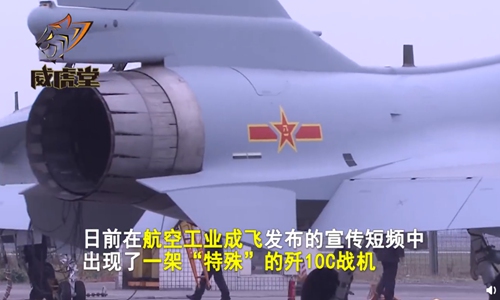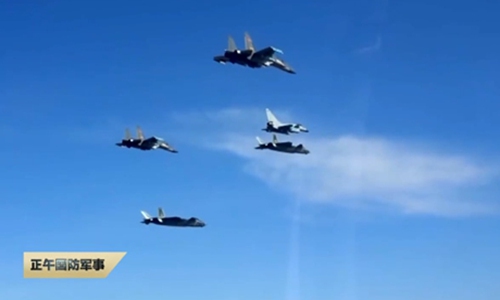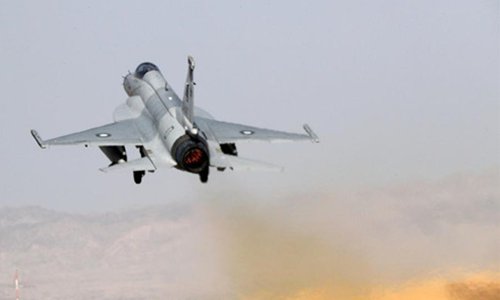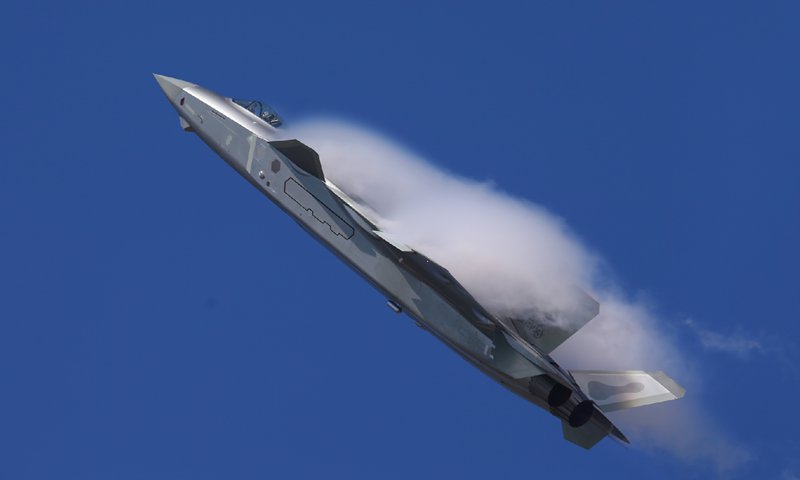
A J-10C fighter jet with a domestically developed WS-10 Taihang engine. Photo: Screenshot from China Central Television
A newly built J-10C fighter jet is reportedly equipped with a domestically developed WS-10 Taihang engine and ready to join military service, a sign that the homemade engine has become technically mature and reliable, experts said.China will no longer rely on foreign fighter jet engines and the more advanced J-20 fighter jet could also start to use homemade engines soon, Chinese experts predicted.
A J-10C developed by an arm of a Chinese major aerospace firm was seen using a domestically developed WS-10 Taihang engine instead of a Russian-made AL-31 engine previous J-10s were installed with, Weihutang, a column on military affairs affiliated with China Central Television, reported on Monday.
The WS-10 Taihang is China's first high-performance, high-thrust turbofan engine with intellectual property rights, Weihutang reported. The column Weihutang was referring to a video released over the weekend by Chengdu Aircraft Industrial (Group) Co. Ltd. under the state-owned Aviation Industry Corporation of China (AVIC), which showed a J-10C fighter jet painted with Chinese military aircraft insignia taxiing on an airfield before take-off.
Chengdu Aircraft Industrial (Group) has resumed work since February 10 from the extended holidays due to the novel coronavirus outbreak, and recently conducted its first flight operations, the company said in the video released on its WeChat public account on Saturday.
Installing the J-10C with the WS-10 engine shows this engine has reached a very high technical level and can fulfill combat demands in terms of reliability and thrust, reaching the same standard as foreign products, Wei Dongxu, a Beijing-based military expert, said.
China will continue to improve the engine and will no longer rely on imported products, Wei said.
Some J-11B and J-16 fighter jets have been using WS-10 engines for a while, Weihutang said, but the two types of aircraft use two engines, and the J-10, which only uses one, is more vulnerable to engine failure, analysts said, noting that this is a further indication that the WS-10 engine has become very reliable.
China's stealth fighter jet, J-20, which was also developed by the AVIC's Chengdu branch, could also use the WS-10 engine in the future, Wei said.
China is also developing the WS-15, a more powerful turbofan engine, for the J-20, media reported. But this next generation engine might need more time to enter service, analysts said.




